At the airport, Customs translates to a lot of rules to follow. But in the automotive world, “customs” are whatever you want them to be. Velocity Restorations of Cantonment, Florida decided to make its own version of something that never existed: a 1972 Ford F-150.
If you look at the brochure for Ford’s line of 1972 pickups, you’ll see the advantages of the Twin-I-Beam front suspension, the selection of I6 and V8 engines, and the differences between the Sport Custom, Ranger, and Ranger XLT trim levels, among many other things. What you won’t spot is any mention of the F-150, a vehicle so common these days that it tends to blur into the background. That’s because Ford didn’t roll out the F-150 until the 1975 model year as its line of “New Heavy-Duty 1/2-Ton Pickups.” As the numbers in its name imply, the F-150 slotted in between the F-100 and F-250, particularly in terms of its Gross Combined Weight range. Whereas the F-100 could have a GCW of 4,650-5,700 pounds and the more capable F-250 had a GCW span of 6,200-8,100 pounds, the F-150’s GCW rating was 6,050 pounds exactly. Like its beefier sibling, the F-150 ran on low-lead or unleaded fuel, which made it more flexible than the unleaded-only F-100.
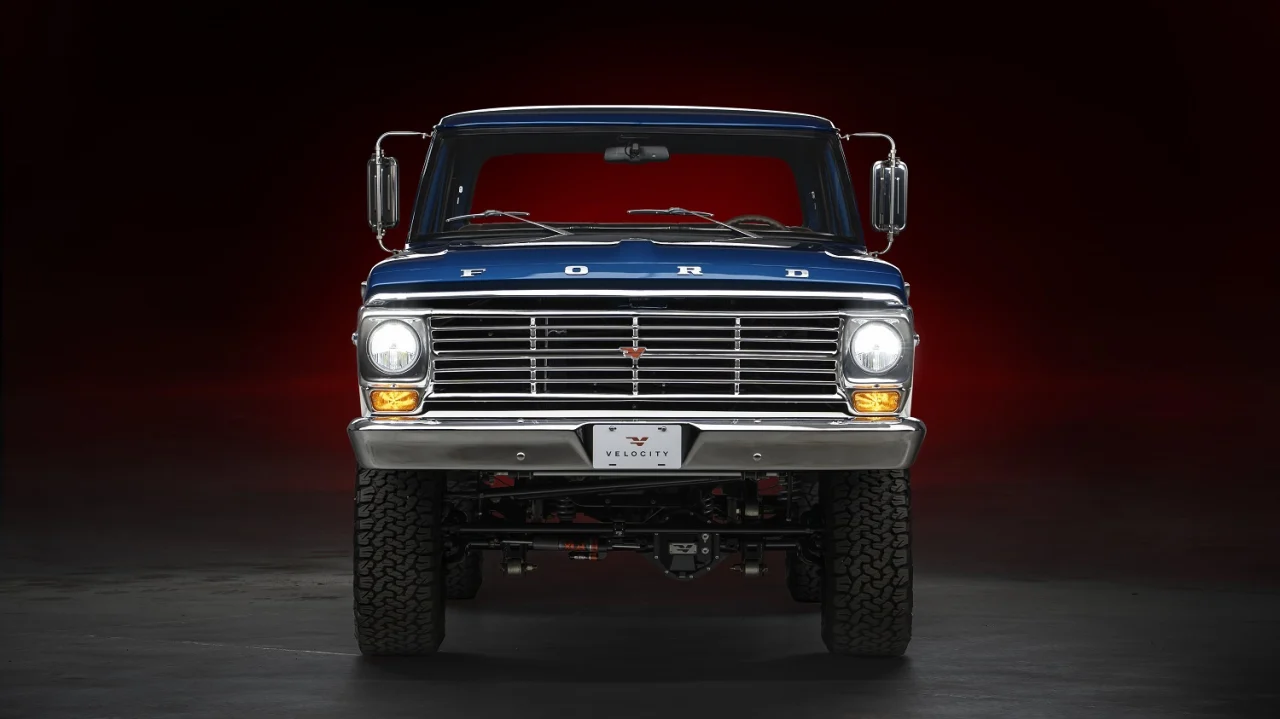
Velocity decided to rewrite that chapter in Ford truck history by making what you see here. Part of Velocity’s Heritage Series of vehicles, this 1972 F-150 is based on a Roadster Shop frame. The “Bumpside” body is finished in Midnight Blue and Wimbledon White, and fitted with chrome bumpers, custom-machined billet trim, and new glass and weatherstripping. Modern touches include the LED headlights, power side steps, and backup camera next to the tailgate handle.
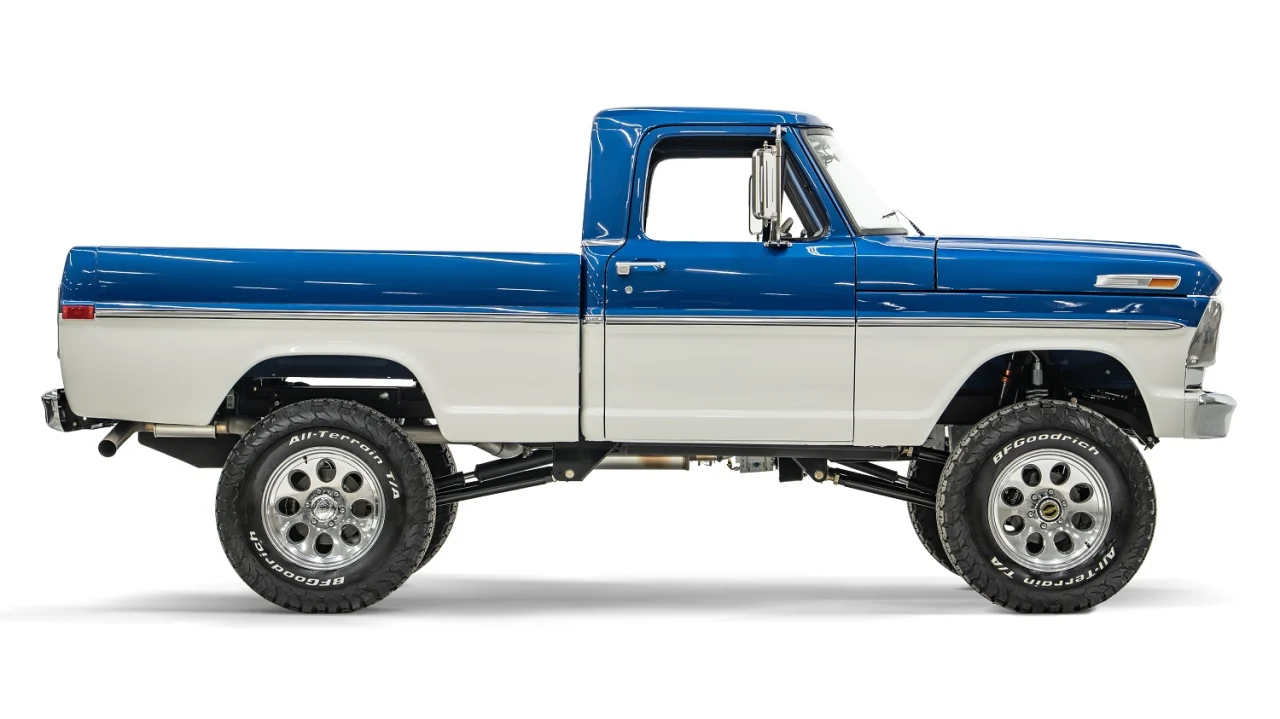
Velocity didn’t pass up the chance to make its custom truck more capable. It gave this rig a Highboy-style stance and installed Dana 44 front and Dana 60 rear axles, sway bars at both ends, coilovers at every corner, and a four-link rear suspension. Of course, it upgraded the wheels and tires, too, bolting on a set of 18-inch wheels equipped with 305/70R18 BFGoodrich All-Terrain T/A tires. Behind the eight holes drilled into the wheels are hydroboosted Wilwood disc brakes.
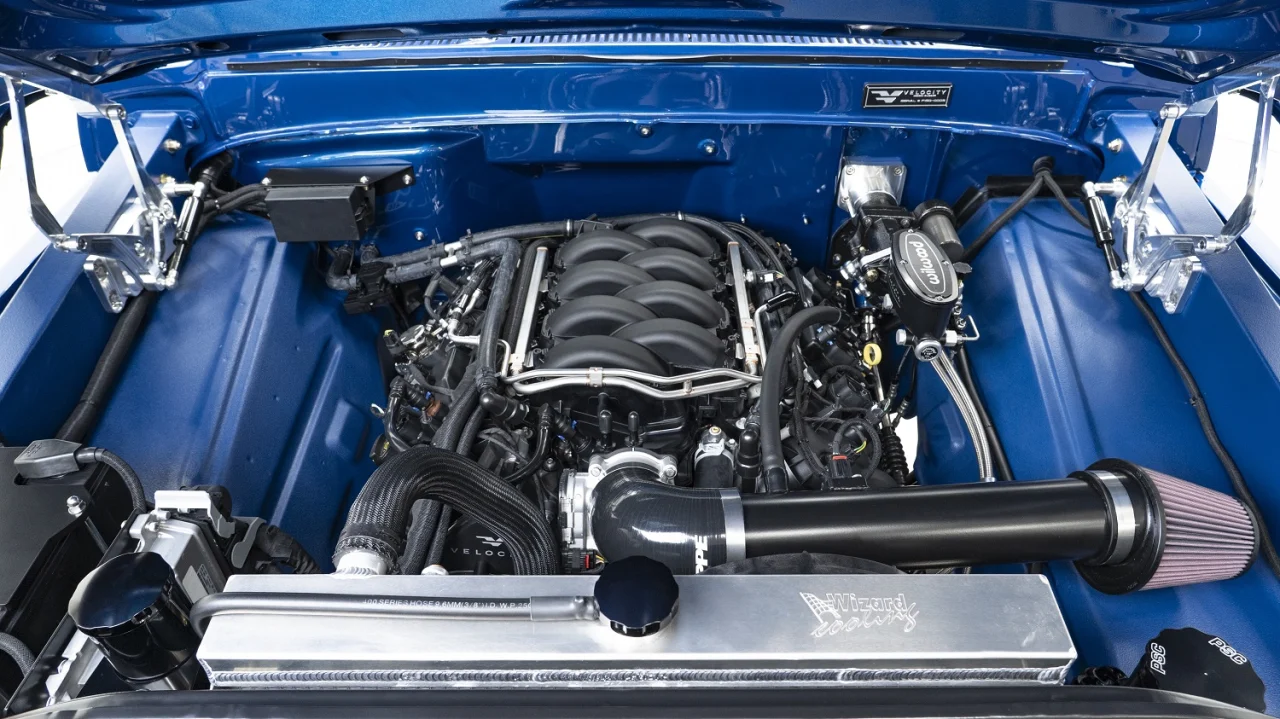
There’s another major upgrade under the hood. No, it’s not a 390 retrofitted with fuel injection. It’s a Gen III Coyote 5.0-liter V8 crate engine with Velocity’s own serpentine belt and exhaust systems. Another thoroughly modern piece of hardware is the 10R80 10-speed automatic.
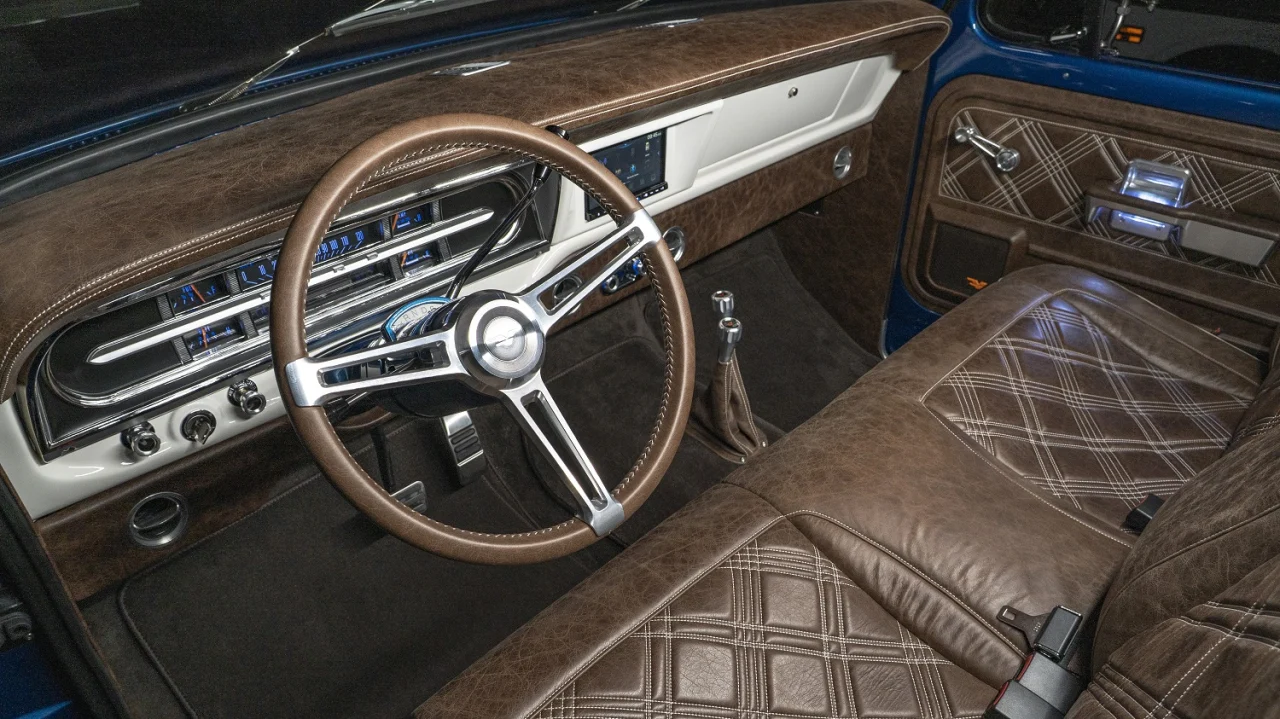
The interior has been luxed up with full carpeting and brown leather upholstery with quilted inserts and contrast stitching. The same color scheme covers the dash pad, steering wheel, and door panels. Behind the Sparc Industries wheel is a set of Dakota Digital gauges specially made for Velocity. The Bluetooth-compatible Alpine head unit has Android Auto and Apple CarPlay, shows the feed from the backup camera, and helps adjust the Focal audio system. A Vintage Air climate control system keeps two lucky occupants comfortable on the road or trail.
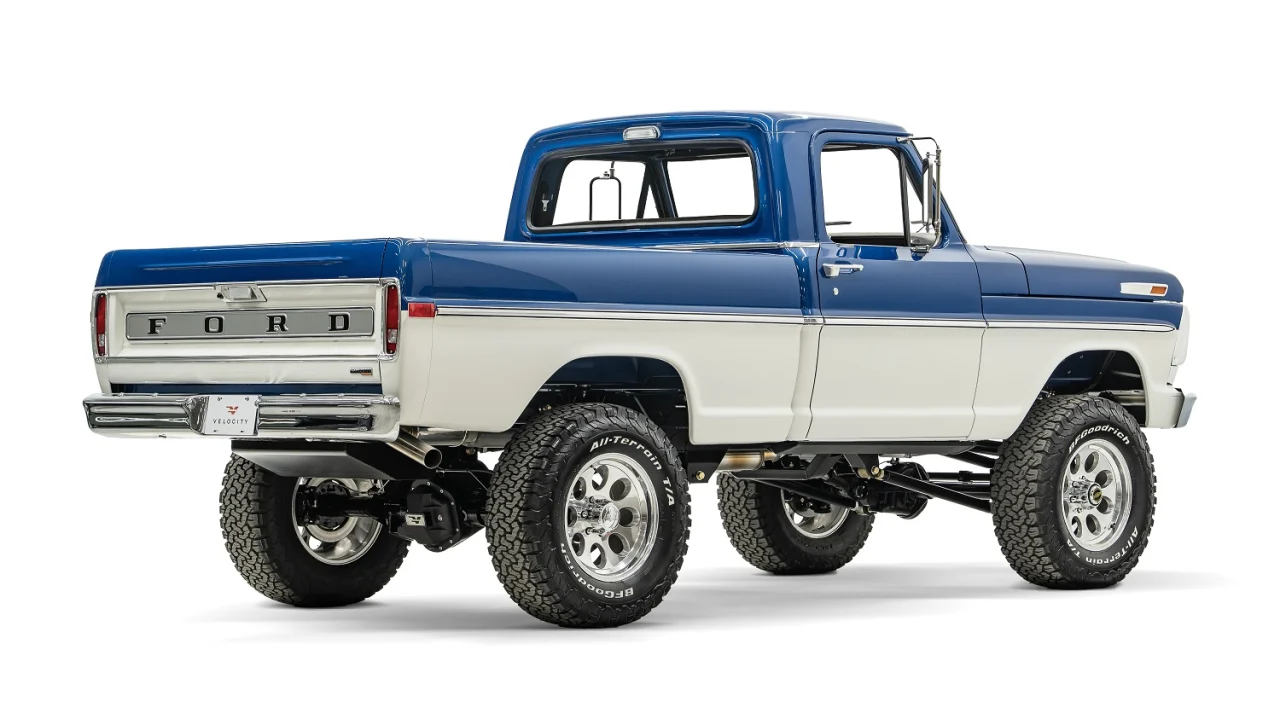
Velocity hasn’t posted a price for its custom 1972 F-150, but you can use the $339,900-$349,900 price tags for its F-100s and the $379,900-$399,900 pricing for its F-250s as a rough guide. Unfortunately, paying is one rule that does apply to customs in the automotive sense of the word.

